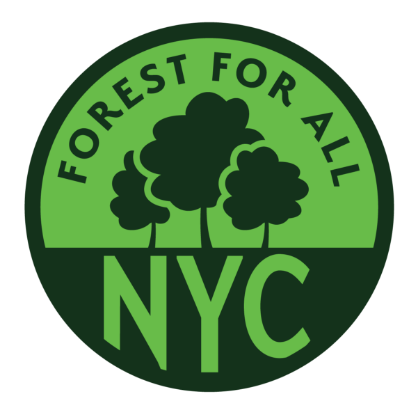BY Caroline Spivak Crain’s New York
The issue
Maybe your favorite tree is a stately pin oak or a London plane tree that greets you every time you step outside, or there’s a lush row of American elm trees you walk slightly out of your way to enjoy. The city’s more than 5.7 million trees beautify blocks, boost property values and play an increasingly important role in addressing climate change by cleaning the air, cooling streets and buildings, sopping up flood waters and capturing planet-warming carbon. And trees are an investment with staying power; the city’s oldest planted tree is supposedly an enormous tulip tree in Alley Park Pond in Queens that was a sapling more than 350 years ago.
Planting more trees and preserving the ones we already have is perhaps more important now than ever, but it’s not as simple as plopping a sapling in some soil and watering it. Growing the city’s urban forest — 53% of the city’s trees fall under the purview of the city’s Parks Department — is time-consuming and costly. In Fiscal Year 2024, which just ended in June, the average cost for the city to plant a tree was an eye-popping $3,300, according to the Parks Department.
The players
For street trees in particular, foresters with the city’s Parks Department survey planting spots to ensure a tree can survive there and that its roots won’t interfere with the spaghetti of underground infrastructure. One of the city’s planting contractors may have to cut out a chunk of sidewalk or have a dead tree stump removed. There are more than 130different tree types the city uses for curbside planting, and a variety of factors help determine which one to plant. Among the most common new plantings are Thornless Honey locust, Swamp White Oak and European Hornbeam trees. Parks workers source the trees from local growers and plant them either between February and March or between September and October.
The job doesn’t end there. The city contractor that planted the tree must conduct regular maintenance on it for two years, for things like replacing missing soil, weed removal and pruning. New trees are pretty easily spotted by the two wooden stakes installed on either side of them for support. Some also come with tags declaring “I’m your new tree” with the name of the tree species and a QR code that the city uses to track contractor maintenance. Street trees can also be requested by New Yorkers to be planted for free, by going through the city’s tree service request system or by calling 311.
The challenges
The Adams administration has made noteworthy progress on growing the city’s tree canopy with 17,678 tree plantings along streets and in landscaped parks this past fiscal year; another 18,000 were planted in the city’s more wild “natural areas” — think forests, wetlands and grasslands, according to city data shared with Crain’s. This past fiscal year marks the third in which the Parks Department has increased the number of trees planted in the city. The more than 35,000 new trees represent the largest tree planting total in the last eight years, and 7,301 of the new trees were planted in heat-vulnerable neighborhoods and parks. But some researchers and parks advocates say that onerous city contracting processes and red tape contributes to higher than necessary costs compared to the private sector.
“Contractors know that when it comes to working with the city, it can often be painful to get paid and time consuming to deal with the city’s own requirements — they price all of those things in,” said Eli Dvorkin, the editorial and policy director for The Center For An Urban Future, a nonpartisan policy organization. Budget cuts also threaten maintenance work that ensures the city’s trees stay healthy in the years ahead. The Parks Department received about $20 million less this budget season than it did the previous year. “They are constantly having to do more with less, and that is a really big challenge,” said Tami Lin-Moges, the Interim New York Cities Director at The Nature Conservancy, which convened and leads the Forest for All NYC coalition. “The funding is so variable year to year as well and that really impacts overall operations and longer-term planning because, again, trees are living organisms and you need to plan ahead,” Lin-Moges added.
Several variables go into the price tag for planting a tree, but on the private side, things tend to be a bit cheaper. Brooklyn-based Arborpolitan Tree & Garden Care typically charges clients between $1,200 and $1,600 to plant a street tree, according to Ethan Wood, an arborist with Arborpolitan. The company sells maintenance packages that can be as little as $150 or high as $400 per visit, depending on the type of tree.
Similarly, Bill Logan, the founder and lead arborist at Urban Arborists, says if they’re simply planting a tree in a private citizen’s front yard they would charge somewhere between $1,500 and $2,000. “We are not the cheapest,” said Logan, “because we not only plant the trees but we also give people protocol for taking care of them.”
What’s next
The Adams administration in its climate blueprint said it aims to bring the city’s tree canopy coverage to 30% — up from some 22%. The city doesn’t have a specific timeline it’s committed to achieving that goal. In the meantime, the Parks Department says that due to a $136 million investment included in the city’s budget for Fiscal Year 2023, the agency expects to plant a tree in “every viable spot in most heat-vulnerable neighborhoods” by 2027. A lack of trees in neighborhoods is a common denominator for a greater risk of death — some 350 New Yorkers die prematurely each year due to stifling weather.
Original article here.
Here is a PDF version of the article at the time of publication.
